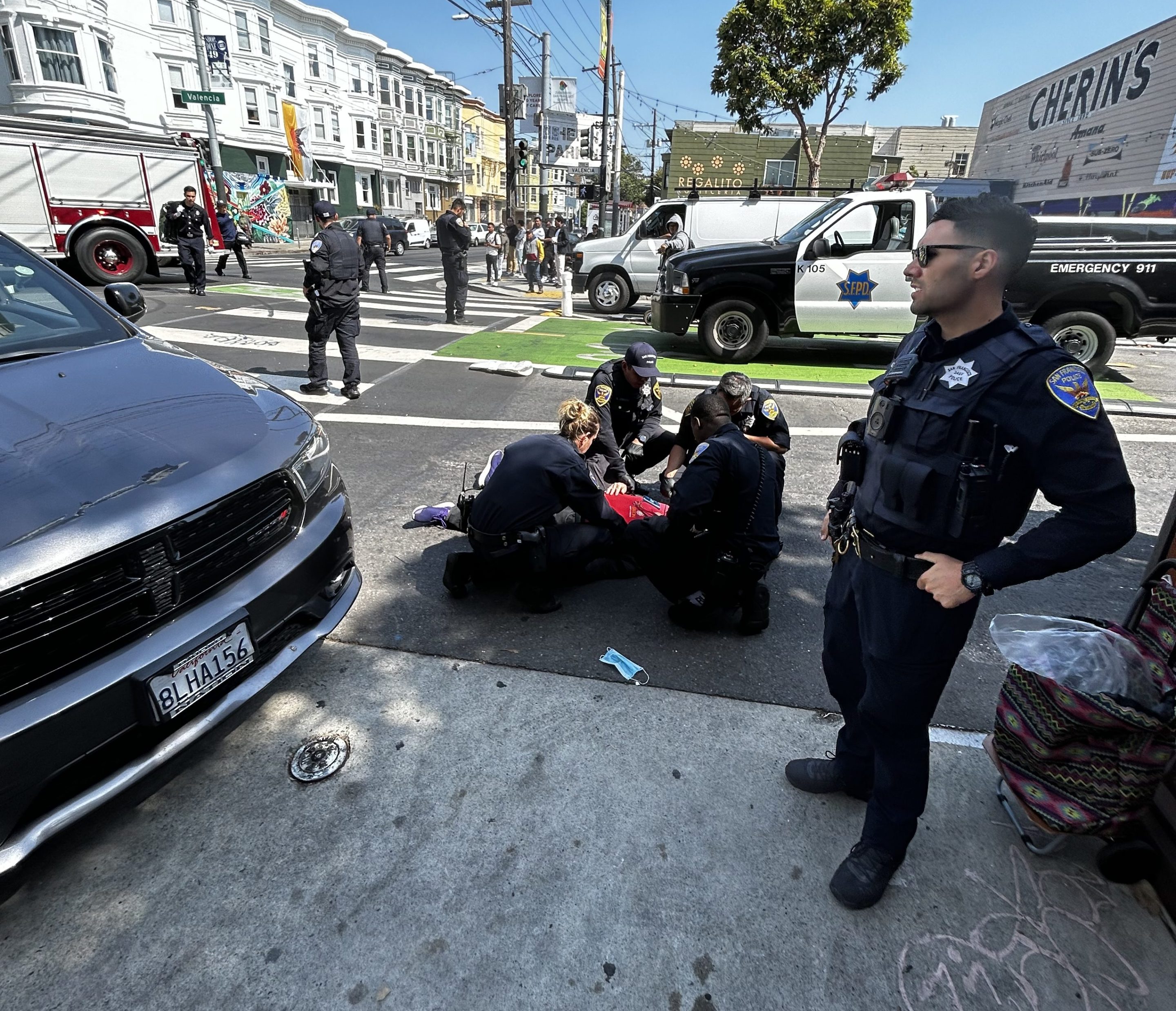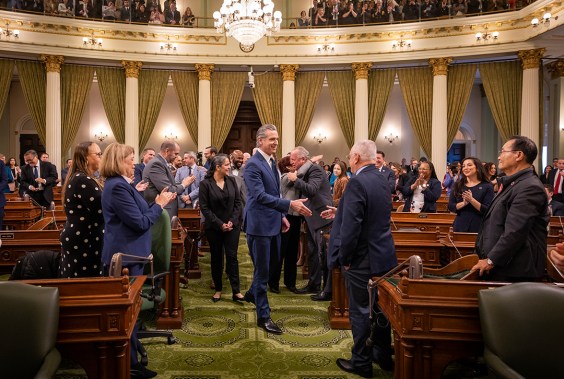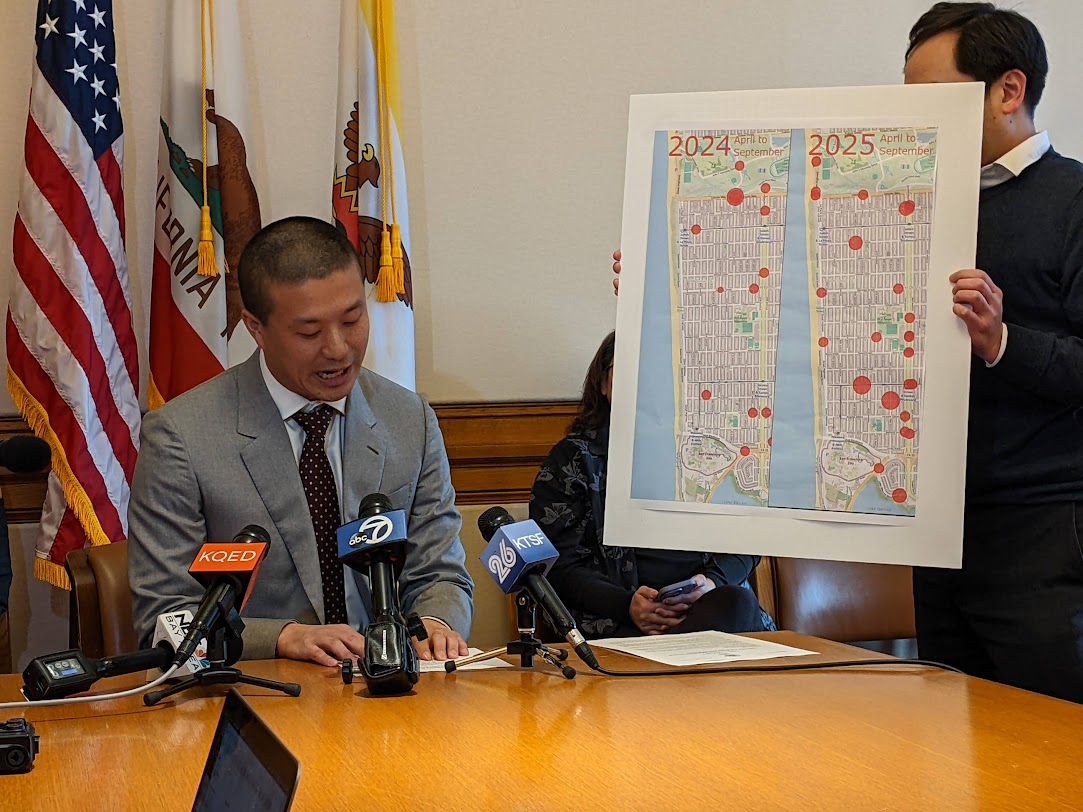SFMTA Director Jeffrey Tumlin and Board Chair Amanda Eaken wrote an op-ed Tuesday called "We all love Valencia Street. Let’s make sure it works for everyone," in response to objections to the street's center-running bike lane. Thank goodness, they're finally talking about installing protected bike lanes. But it wasn't because several people were hospitalized and a motorist killed pedestrian Jian Huang in the brief time since their center-running experiment opened. No, they responded because merchants staged an organized protest about loss of business and parking issues.
From the op-ed, which ran in the Examiner:
Valencia Street businesses are telling us that the new design isn’t working for them or their customers. We’ve heard mixed reviews from bike lane users — some say they feel much safer than before and enjoy the new protected space, while others say that it’s still not safe enough.
It's refreshing that Tumlin and Eaken are finally being upfront that parking was the driver for the decision to abandon the extension of curbside protected bike lanes that were designed and ready to go in 2020. "The merchants asked us to find another option because a curb-running bike lane would require many of those parklets — and much of the parking — to be removed," they wrote in their op-ed.
This is in stark contrast to previous denials that the agency and the mayor put parking above life and limb on Valencia (and everywhere else). Note the Tweet below from Jamie Parks, until recently SFMTA's head of the agency's Livable Streets Division:
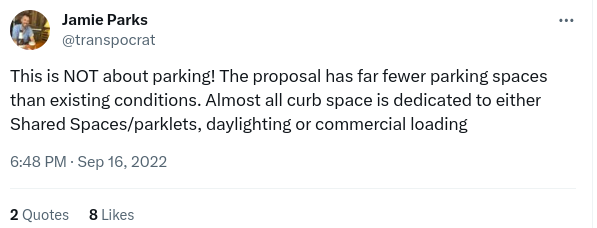
As to the parklet issue, that's their favorite red herring--protected bike lanes already go around parklets north of 15th on Valencia and between the curb and the parklets on Telegraph in Oakland.
And even if parklets were a substantial obstacle (and they just aren't) how many broken bones and lost lives should we accept to save 20-some parklets?
They go on to say that the city needs to be patient. "The key point right now is that this is a pilot. We are trying something and seeing how it works. Pilots are meant to be evaluated and either adopted, adjusted, or redone with new information."
Trying something and seeing how it works? They're retrying something that does not work. As this publication has shown repeatedly, this design has been tried in other cities and other countries. The center of the street is just not where you place a bike lane (except in some extreme edge cases). The city is knowingly and intentionally "piloting" a familiar and dangerous design to preserve parking, full stop.
As mentioned, the good news is Tumlin and Eaken are finally, at long last, opening the possibility of building what works: curbside protected bike lanes with protected intersections:
...we could return to our original parking-protected bike lane plan – a bike lane running between the sidewalk and parked cars on the street. This design is more familiar to San Franciscans. The trade-off here is that this type of protected bike lane will require removing parklets and losing more than half of the curbside parking and loading. So that’s a conversation we’re starting to have.
Key to that "original parking-protected bike lane plan" is it included protected intersections (example seen below) that in many ways are more important than the protected bike lanes themselves.
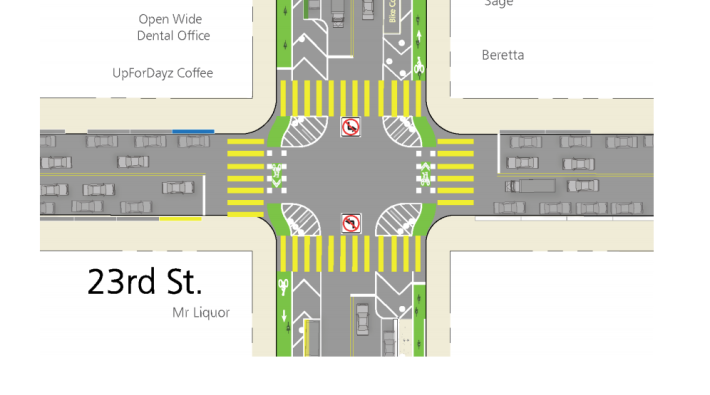
As Streetsblog has also explained previously, as have international experts in safe road design, protected intersections save the lives of pedestrians, not just cyclists.
Protected intersections are safer intersections! I love how these did not exist in the USA 10 years ago, and now they popping up everywhere. @NACTO @tooledesign https://t.co/GAKSGJkwor
— Bill Schultheiss (@schlthss) December 13, 2023
The video in the Tweet unfortunately doesn't have any pedestrians (does anybody walk in Milwaukee?). But it's nonetheless an excellent real-world illustration of this standard design that, one hopes, will help people who aren't familiar with protected intersections visualize why it's as important for pedestrians as it is for cyclists (here's another go-to illustrative video). Pay attention to the short distances where motorists and pedestrians can interact. Note how slowly the motorists take those turns. That's because of the design, which is based entirely on true-and-tried Dutch safety engineering. And the amazing safety stats from the Netherlands put San Francisco to shame.
Glad to see @SFMTA_Muni addressing current tensions and being transparent with possible future options for the center-running bike lane. And hard agree – reverting to no protected lane on Valencia is the worst option. We cannot go backwards. https://t.co/9NgV7HIKDr
— SF Bicycle Coalition (@sfbike) December 13, 2023
Indeed, the San Francisco Bicycle Coalition is right: we can't go backward. But that belies the fact that if Tumlin, apparently with Mayor London Breed's blessing, hadn't sabotaged the original, best-practice designs and had instead shown leadership, there would be a curbside protected bike lane and protected intersections on Valencia right now. There probably wouldn't be a merchant protest going on right now, as evidenced by the lack of one north of 15th, where a curbside lane was installed in 2019 (all but the most car-brained merchants stop complaining about loss of parking when they start making more money, which is typically what happens with protected bike lanes).
But most importantly, Jian Huang would probably be alive. Moving forward, one can only hope that the powers that be demand the safest possible installation on all of Valencia right now.
